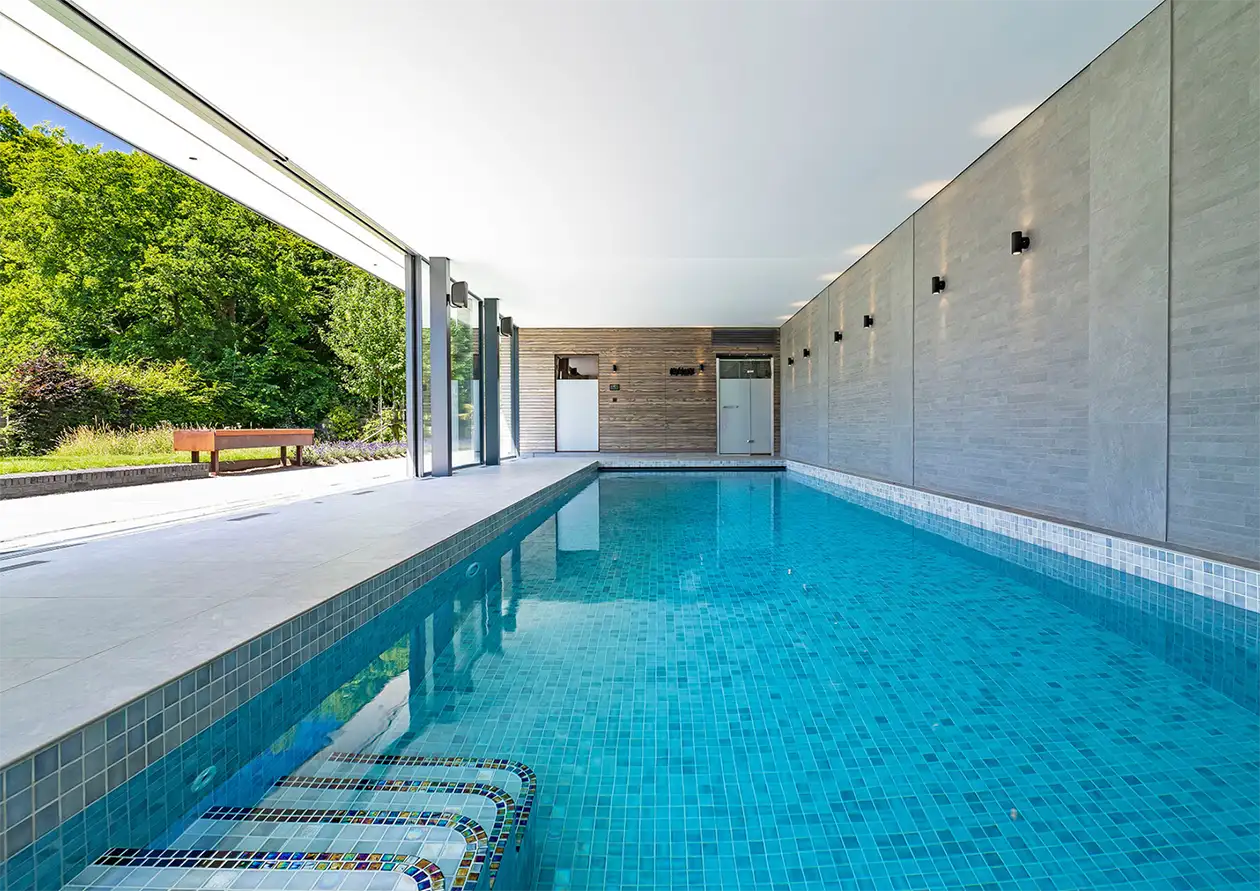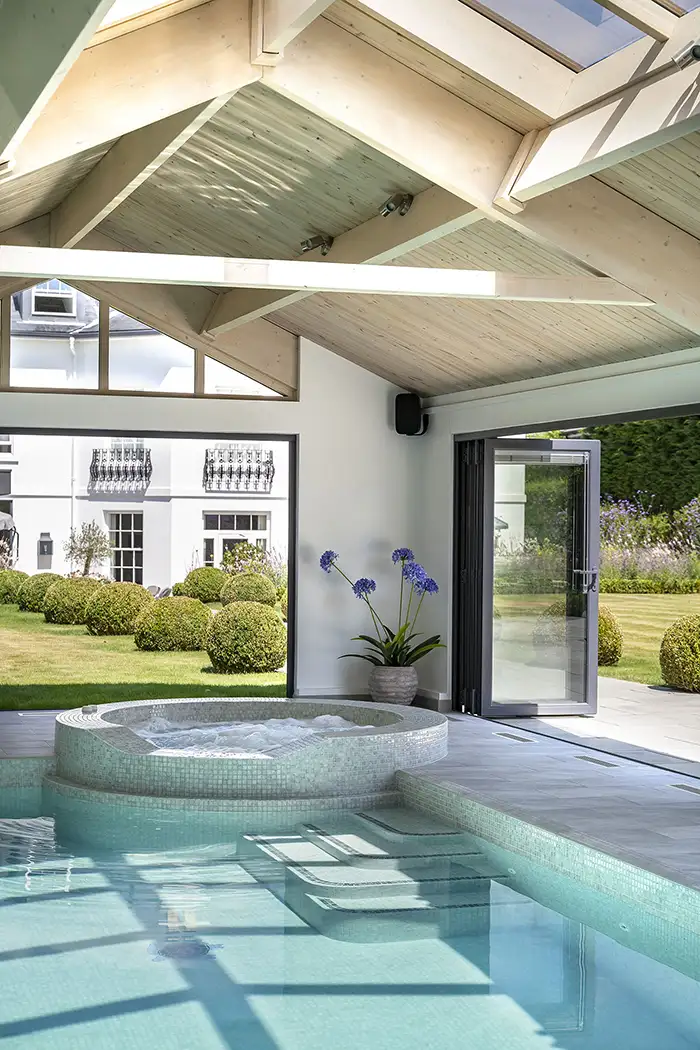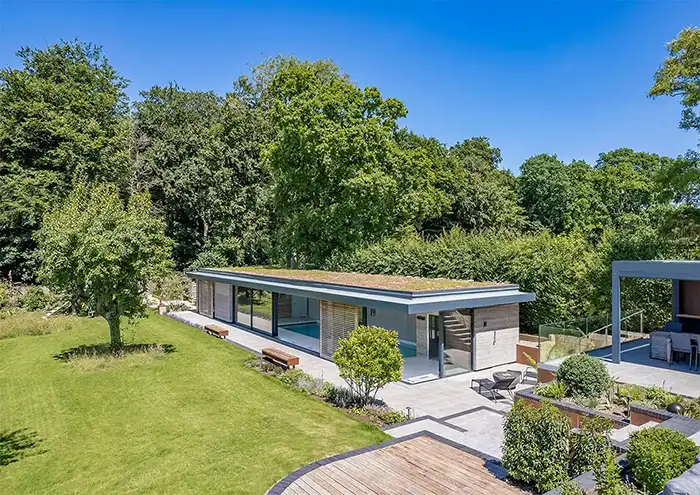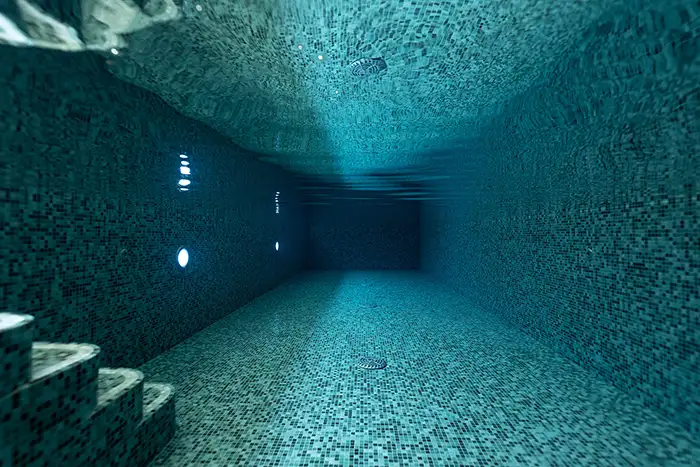
When it comes to building an indoor pool, there's a whole lot more to consider than just what meets the eye. We've seen it all in our 40 years of experience in the pool industry. From the soil beneath your feet to the glazing overhead, every aspect shapes your project's cost and outcome. Join us as we delve into the nitty-gritty details and explore how factors like ground levels, land designation and pool house finishes can impact your indoor pool build.
Ground Levels
Did you know there can be many hidden costs lurking beneath the surface when building your indoor pool? It's not just about what's visible above ground; factors like soil type and water table levels can significantly impact your project's overall cost. Depending on your location, especially in the South or Southeast, you might encounter different soil compositions, requiring extra depth or reinforcement for your pool house foundations to withstand the local ground conditions. Additionally, any necessary demolition or enabling work to facilitate the build of your new indoor pool should be factored into your budget as well as considerations such as dewatering to manage high water tables in the ground - all of these items can cost more to ensure a fully functioning pool.
Changes in ground levels, whether due to garden terrain or building on slopes, may also pose challenges which require additional work due to the relocation of the soil and retaining structures. The presence of mature trees in your garden can also potentially influence costs, especially if tree preservation orders protect them. It can be hard to know what effect their root systems might have on the foundations of your indoor pool, leading to further requirements.


Location - How Close to a House Can You Build a Pool?
The distance from a house to an indoor pool—whether as an extension or a standalone structure—depends on several factors. Building regulations ensure safety, health, and structural integrity, requiring adherence to standards for drainage and ventilation. Some indoor pools may qualify for permitted development rights, allowing construction without full planning permission, but these come with restrictions on boundary proximity. If the pool design doesn’t meet these criteria, planning permission is necessary, which can incur additional costs. This also involves local authority assessments of aesthetics, safety, and neighbour impact. Consulting with experienced companies like Origin is essential to navigate these regulations effectively, getting it right from the beginning and saving you hassle and money in the long run.
Land Designation
In some instances, there are elements of indoor pool cost that are outside your control. Living in certain areas like the Green Belt, AONB, or conservation areas or having a listed home can come with extra costs and complications. Land designation might limit where you can build your pool, how big it can be, and how close it can be to your property. Plus, local planning policies might require specific external finishes you hadn't budgeted for or initially thought of. Depending on your property's designation, you might need extra reports before you can progress to planning. Think archaeological digs, ecological surveys, and arboriculture reports – all done by third parties and all adding time and money to your project.


Designers, Make It work
We’ve previously discussed the cost factors when designing a pool house interior. However, there are additional elements to consider when thinking of external design and how you want your pool house to look. More recently, we have spent time studying the effects of solar and how we can use it to our advantage or how it can be detrimental to your indoor pool design. Glazing, especially roof glazing, can significantly impact the design and cost of your pool house. More glazing requires higher levels of atmosphere control, necessitating more advanced equipment and adding to the overall cost. Different roof configurations and finishes also play a part. There are some cost-effective solutions available and it may depend on what planning policies apply to your area. Complex roof finishes involving multiple roof coverings, such as flat roof systems with parapet details or pent roofs, can add character but will ultimately be more costly owing to the complexity of the design.
Hidden Pool Installation Cost
'Hidden pools' or moving floor pools are increasing in popularity due to their flexibility. This adaptability not only maximises the use of space but also ensures that your pool meets various needs throughout the year. The average cost of a moving pool floor can vary significantly depending on several factors, including the type of system, pool size, design complexity and particular installation requirements based on the other factors listed above. Consider consulting with a company like Origin, which can provide a more accurate quote based on specific needs and conditions.
While some of the factors discussed in this blog may seem daunting, it’s helpful to remember that Origin does it all. We work with you from the start to address these factors and design creative, suitable solutions to ensure your indoor pool is unaffected by any of these issues.



 Locations Covered
Locations Covered

